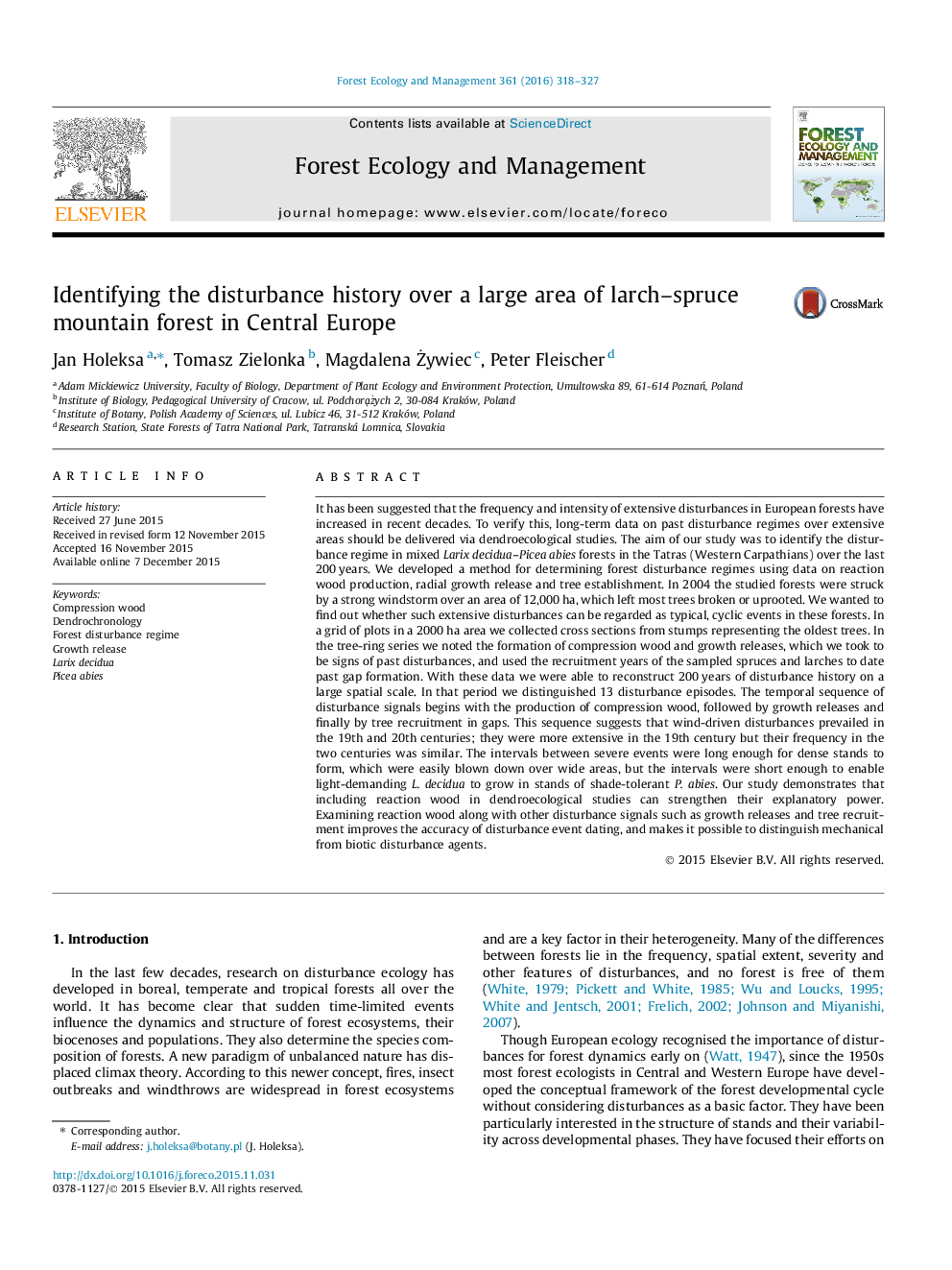| کد مقاله | کد نشریه | سال انتشار | مقاله انگلیسی | نسخه تمام متن |
|---|---|---|---|---|
| 6542478 | 159160 | 2016 | 10 صفحه PDF | دانلود رایگان |
عنوان انگلیسی مقاله ISI
Identifying the disturbance history over a large area of larch-spruce mountain forest in Central Europe
ترجمه فارسی عنوان
شناسایی تاریخ وقوع در منطقه وسیعی از جنگل کوهی کاج اروپایی در اروپا
دانلود مقاله + سفارش ترجمه
دانلود مقاله ISI انگلیسی
رایگان برای ایرانیان
کلمات کلیدی
موضوعات مرتبط
علوم زیستی و بیوفناوری
علوم کشاورزی و بیولوژیک
بوم شناسی، تکامل، رفتار و سامانه شناسی
چکیده انگلیسی
It has been suggested that the frequency and intensity of extensive disturbances in European forests have increased in recent decades. To verify this, long-term data on past disturbance regimes over extensive areas should be delivered via dendroecological studies. The aim of our study was to identify the disturbance regime in mixed Larix decidua-Picea abies forests in the Tatras (Western Carpathians) over the last 200Â years. We developed a method for determining forest disturbance regimes using data on reaction wood production, radial growth release and tree establishment. In 2004 the studied forests were struck by a strong windstorm over an area of 12,000Â ha, which left most trees broken or uprooted. We wanted to find out whether such extensive disturbances can be regarded as typical, cyclic events in these forests. In a grid of plots in a 2000Â ha area we collected cross sections from stumps representing the oldest trees. In the tree-ring series we noted the formation of compression wood and growth releases, which we took to be signs of past disturbances, and used the recruitment years of the sampled spruces and larches to date past gap formation. With these data we were able to reconstruct 200Â years of disturbance history on a large spatial scale. In that period we distinguished 13 disturbance episodes. The temporal sequence of disturbance signals begins with the production of compression wood, followed by growth releases and finally by tree recruitment in gaps. This sequence suggests that wind-driven disturbances prevailed in the 19th and 20th centuries; they were more extensive in the 19th century but their frequency in the two centuries was similar. The intervals between severe events were long enough for dense stands to form, which were easily blown down over wide areas, but the intervals were short enough to enable light-demanding L. decidua to grow in stands of shade-tolerant P. abies. Our study demonstrates that including reaction wood in dendroecological studies can strengthen their explanatory power. Examining reaction wood along with other disturbance signals such as growth releases and tree recruitment improves the accuracy of disturbance event dating, and makes it possible to distinguish mechanical from biotic disturbance agents.
ناشر
Database: Elsevier - ScienceDirect (ساینس دایرکت)
Journal: Forest Ecology and Management - Volume 361, 1 February 2016, Pages 318-327
Journal: Forest Ecology and Management - Volume 361, 1 February 2016, Pages 318-327
نویسندگان
Jan Holeksa, Tomasz Zielonka, Magdalena Żywiec, Peter Fleischer,
